|
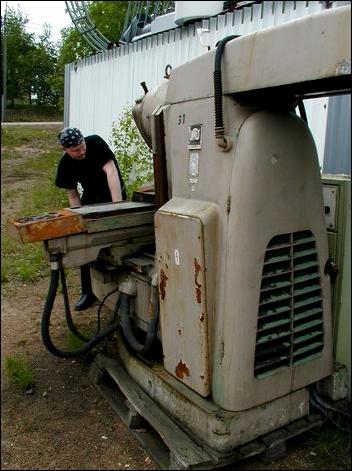 My name is Markus ”Make” Kynänen and I play keyboards in a band called Myrkkyenkeli. You can follow the story of Myrkkyenkeli in the Rockstarba movie trilogy. The first part has already been released and the second part is coming out soon. I have been interested in the piano since I was a little boy and I moved forward to synthesizers in the mid-80's. At that time I also started to collect synthesizers. Lately I have been focusing on vintage analog synthesizers. My name is Markus ”Make” Kynänen and I play keyboards in a band called Myrkkyenkeli. You can follow the story of Myrkkyenkeli in the Rockstarba movie trilogy. The first part has already been released and the second part is coming out soon. I have been interested in the piano since I was a little boy and I moved forward to synthesizers in the mid-80's. At that time I also started to collect synthesizers. Lately I have been focusing on vintage analog synthesizers.
I already have over 300 different kinds of synths in the warehouses and playrooms at my home estate.50 of them don't work for some reason. The functioning ones include the essential Moogs and Mellotrons and also some more exotic stuff.
My latest acquisition is the East German 1950's early analog synthesizer WeltMeister Wurzburg E28C-Z, which I bought via Ebay from Poland. And now it's in my own yard!
The device represents the massively built East German school of construction and weighs more than two metric tons with the concrete base block.. The separate power supply (pictured in the background, green) weighs an additional 400 kilograms. Finnish transporting company Transpoint brought it to my yard by truck, loaded on a pallet. Just try to guess how much it costs to have 2,5 tons of gear forwarded from Poland!
Once I had uncovered my instrument from the plastic packing, I noticed that the actual keyboard was indeed in as bad a condition as the seller had told it to be in, so I unscrewed it and sent it to be fixed at the ”Pajusen Pianopaja” piano workshop. So in these pictures you will notice that the actual keyboard is missing but once I re-attach it, it'll be there on the obvious platform, spanning 6 octaves. The ergonomics of the instrument are quite questionable: You will have to really reach for the keyboard as the switch panel is pushing so far from under the keyboard. In addition, the Overdrive switch is located in the center of the switchboard, and on most of those rare occasions when these instruments have actually been on stage, the audience and mixing technicians have been severely scared by the careless stage performer. With a flick of the switch you can easily have extreme overdrive along with +20bB volume.
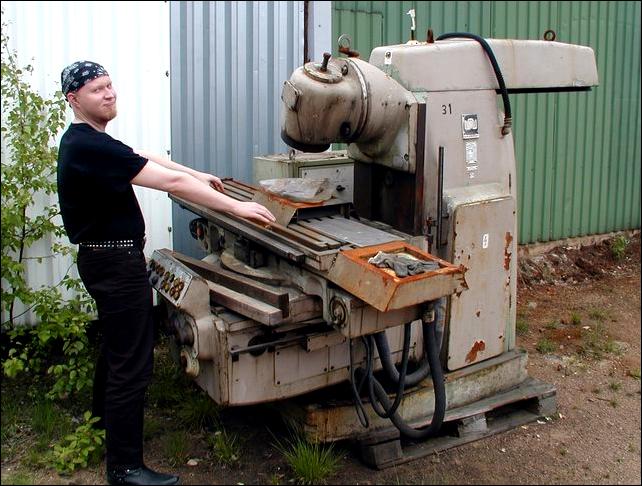
|
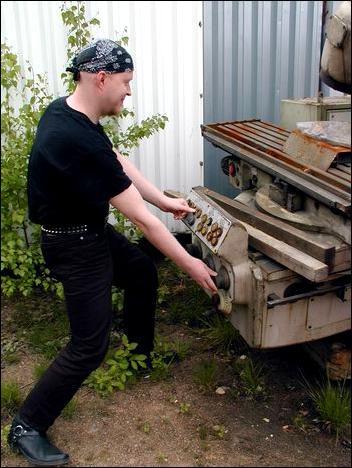
|
Ergonomic thinking and furious stage maneuveurs were not among the main issues back in -58 when the instrument was designed, and when you consider that it was designed by Soviet-East German engineers and aimed for theater music, the bad ergonomics are not a surprise.
|
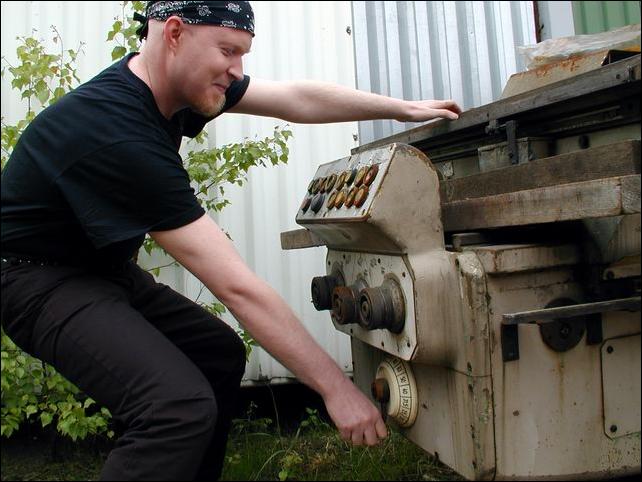
In the front panel you can find the main adjustment knobs for the sound. They are clearly visible, maybe even too much so. The upper panel has on/off-type switches and three filter adjustment wheels and down there is the oscillator adjustment wheel. Although the keyboard consists of 6 octaves, the usable sounds are found mainly in the lower register. The synth was used in theaters for creating low frequency effects and hums, and it's quite effective at that!
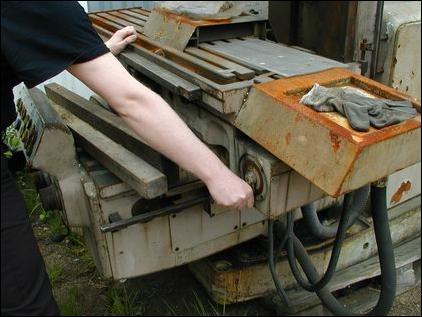
The keyboard platform has a crank handle used for adjusting the sideways horizontal placement of the keys. There are no stoppers in the ends of the rails, so the keyboard platform is also easy to detach from the frame of the instrument. Some musicians with short arms have used the adjusting rails for moving the platform completely to the side, to the extreme position so that they wouldn't hit the switches, but this creates a new problem. When moved close to the end of the guide rails the platform may fall off. An example of that can be seen on Molvanian progressive rock group Slutsky's bootleg concert video from -72.
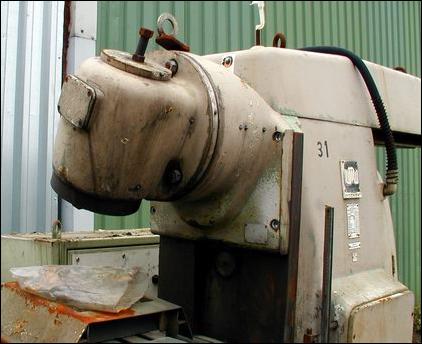
The oscillator, an essential element of analog syntherizer, has been placed sturdily above the keyboard in a heavy, barrel shaped lump of iron. It has a steplessly adjustable tonewheel in the lower front instrument panel. Some say that the adjuster actually effects the sound color, but I think it's just about showmanship. The knob on top of the oscillator is the attachement screw for a mirrorball.
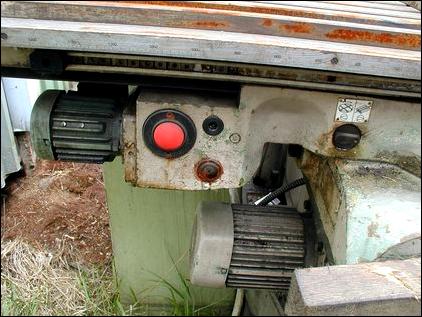
If some part of the musician's body happens to switch on the Overdrive while on stage, the musician can quickly reach for the emergency shut off. It physically switches off the condensator and amplifier. If the PA elements are still in one piece, quick use of this switch may prevent further damages.
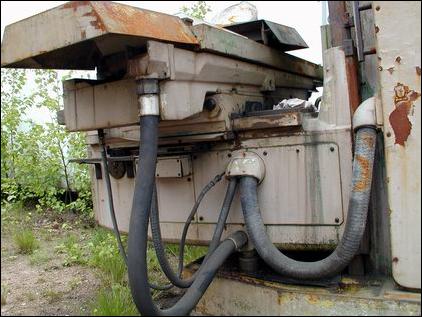
The cables of this instrument are sturdy and heavy, and would easily withhold the restrains of the touring life. On the other hand, the history of these synthesizers does not include too many days on the road. The main reason for this is the massive weight (too much for your regular Ford Transit) and the fact that the concrete base block was usually cast firmly in the orchestra pit. My instrument has a separate bolt-on concrete base block delivered as a factory option. It allows for comparatively easy moving of the instrument.
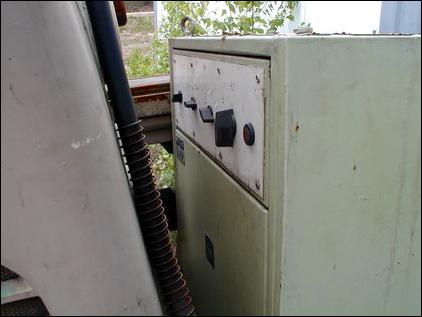
The power supply is usually placed sideways along the frame, so that it's easy to reach for the buttons but in this picture it's still on the pallet.
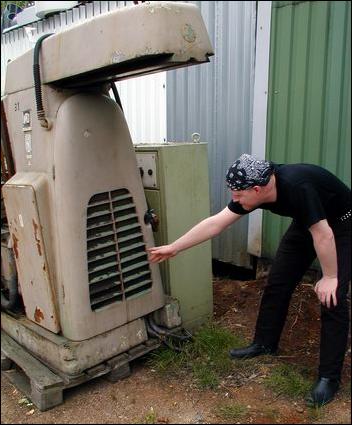
The preferred microfone arrangement is a large diaphragm condensator microphone that is pointed diagonally downwards from the right side, towards the right edge of the speaker element, the way I'm showing in the picture. The large door with meshwire net hides a 16 inch speaker element.
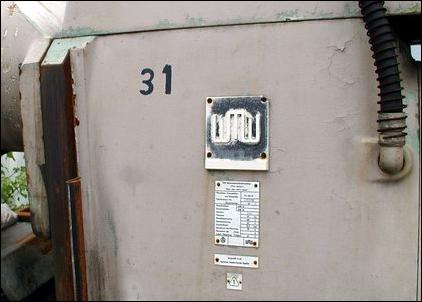
My piece is the 31 st of the 32 manufactured pieces of the WeltMeister Wurzburg E28C-Z synthesizers. There are documented 3 surviving pieces of this type and mine is of the best condition. You can see the compact sister model E29B-Z in the Deutsche Museum in Münich.
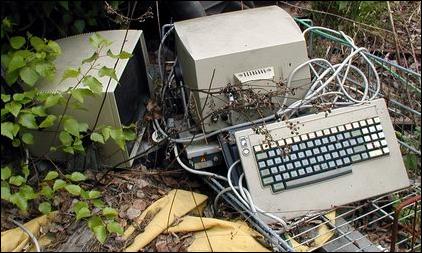
My instrument had been desecrated in the 80's with the installation of a MIDI controller and a stand for two displays. I threw them immediately in the back yard crap pile! What a disgrace!
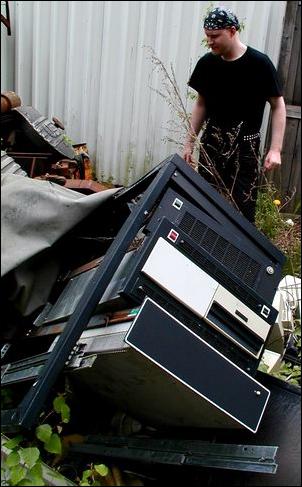
With the MIDI equipment they had used a rack full of crappy amplifiers and rackmount echos. Every single one of them had been used to the breaking point. To the pile then! Actually I took a circuit board from one of them, I can get more for it at Ebay than I paid for the actual WMW.
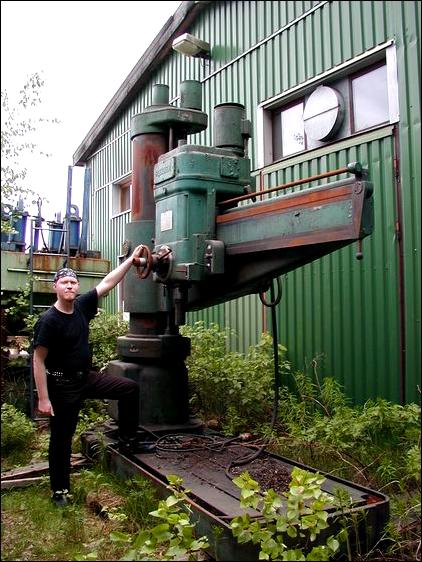
Recently I have also bought a vintage East German sampler from Lithuania. It's a very masculine unit that has a stunning sound!
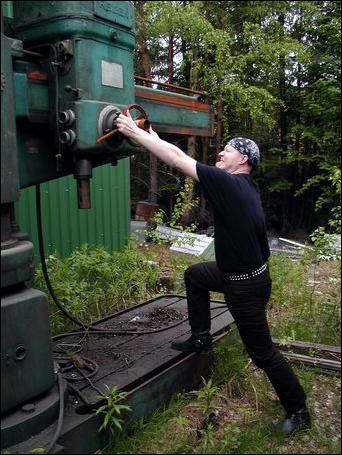
[ Finnish version of article ]
|
 My name is Markus ”Make” Kynänen and I play keyboards in a band called Myrkkyenkeli. You can follow the story of Myrkkyenkeli in the Rockstarba movie trilogy. The first part has already been released and the second part is coming out soon. I have been interested in the piano since I was a little boy and I moved forward to synthesizers in the mid-80's. At that time I also started to collect synthesizers. Lately I have been focusing on vintage analog synthesizers.
My name is Markus ”Make” Kynänen and I play keyboards in a band called Myrkkyenkeli. You can follow the story of Myrkkyenkeli in the Rockstarba movie trilogy. The first part has already been released and the second part is coming out soon. I have been interested in the piano since I was a little boy and I moved forward to synthesizers in the mid-80's. At that time I also started to collect synthesizers. Lately I have been focusing on vintage analog synthesizers.












